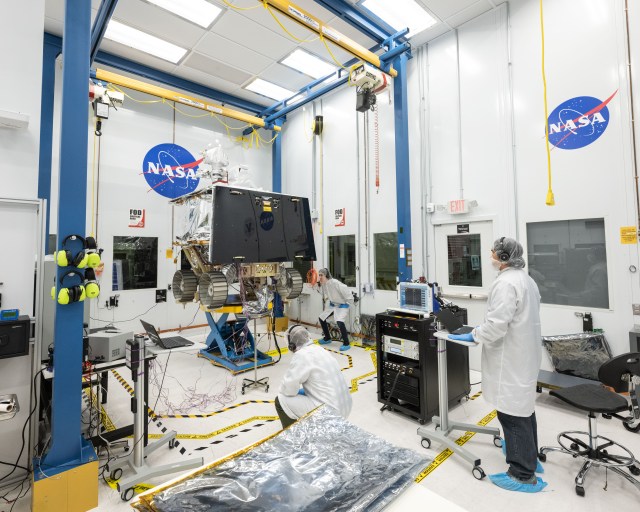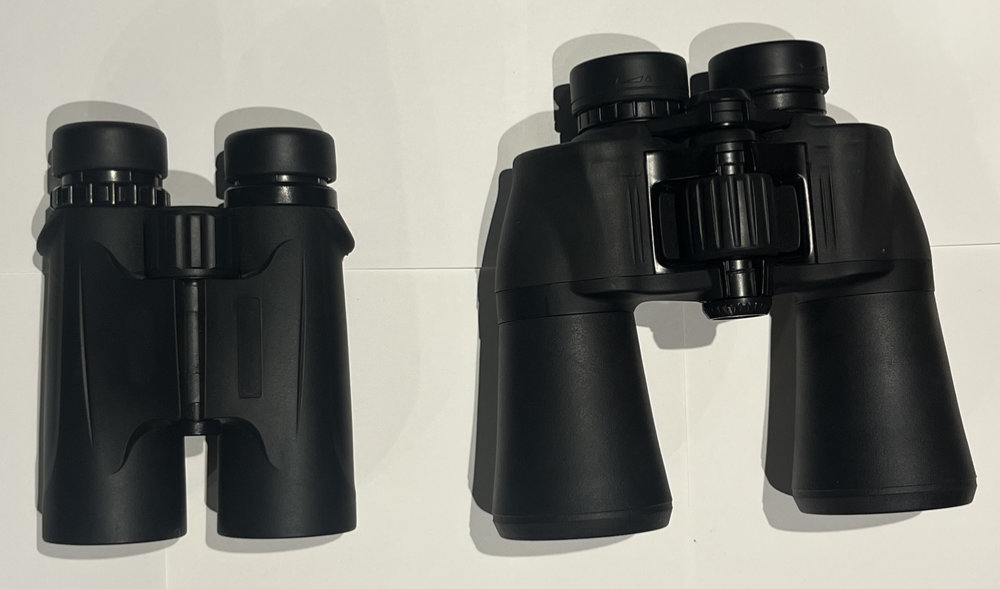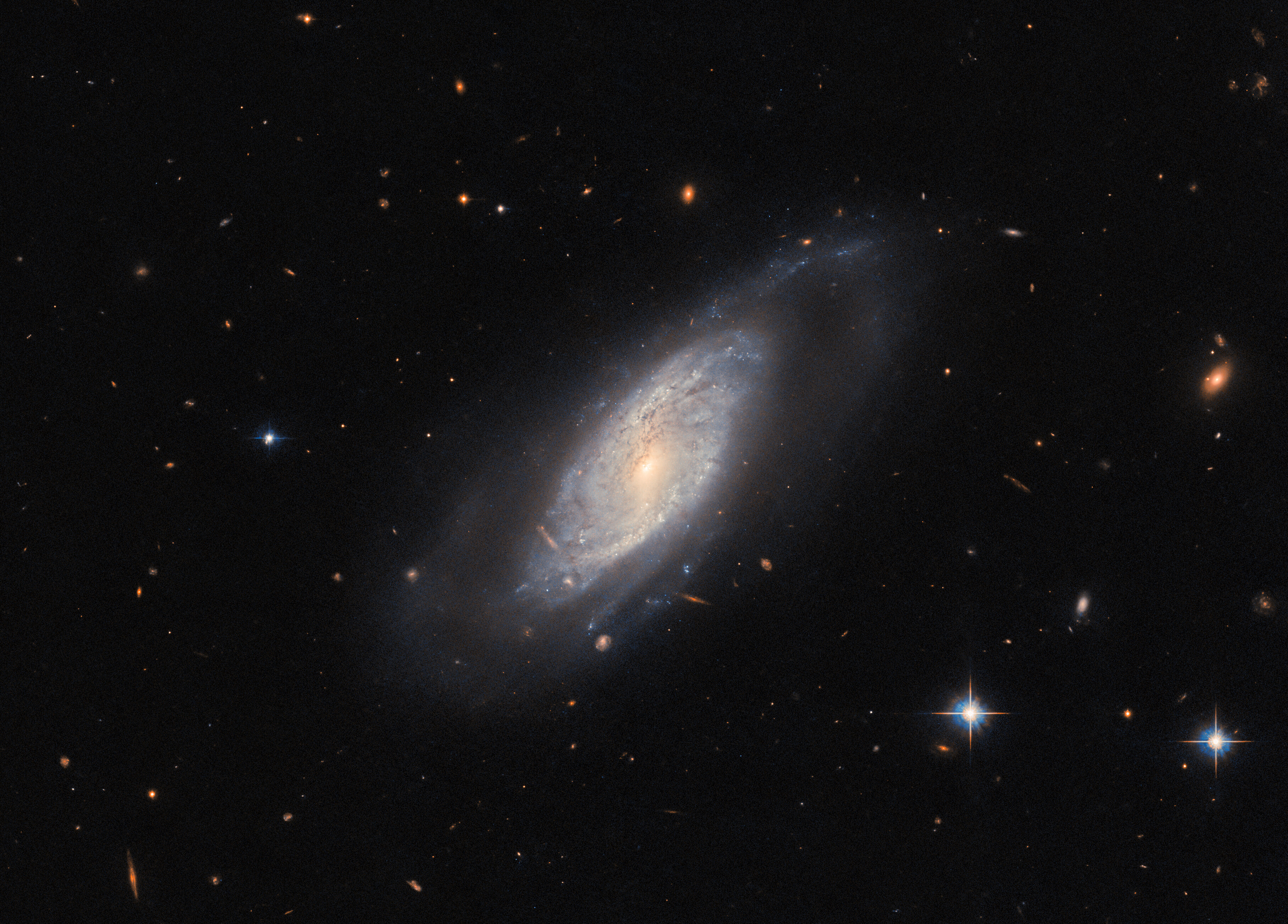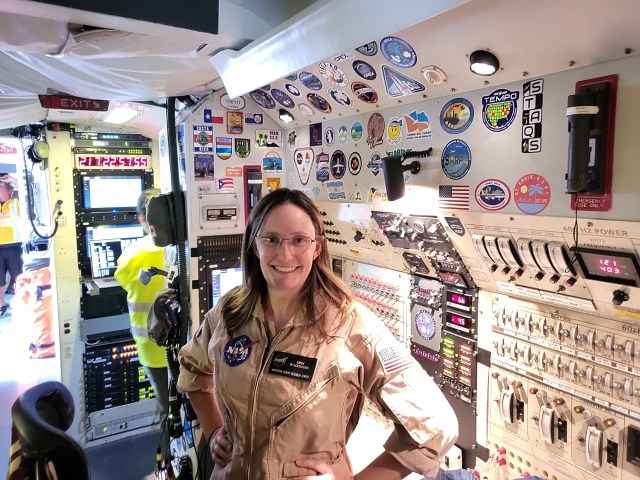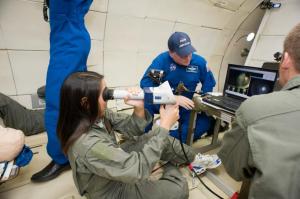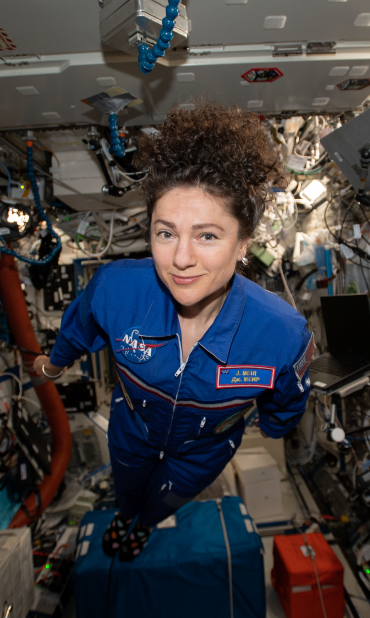Arched over a laptop inside the Human Exploration Research Analog, or HERA, Campaign 6 Mission 1 crew member Madelyne Willis analyzed environmental data simulated by the facility’s habitat system.
HERA is a habitat at NASA’s Johnson Space Center in Houston that provides a venue in which researchers and crew can mimic the isolation and confinement of spaceflight. Willis lived and worked inside the habitat with three other crew members during a 45-day simulated mission to the Martian moon Phobos. NASA scientists want to know how crew members behave when faced with long stretches of isolation, confinement, and remote conditions.
The facility’s habitat system simulates how the environment of a vessel carrying crew to Phobos would change throughout the journey. While true conditions in HERA are similar to what you’d find in any building on Earth, HERA’s computer systems are designed to show daily simulated changes in temperature, pressure, and the concentrations of various gases. For their mission to be successful, HERA crew must monitor and regulate these changes.
During her mission, Willis reviewed the levels of about 14 simulated gases in the facility. These gases weren’t selected at random – they’re also found aboard the International Space Station.
Exposure to high levels of some gases, as well as fluctuations in temperature and pressure within a spacecraft, can pose certain risks to human health. Ensuring these gases fall within parameters will be necessary to secure the health and safety of crew on future missions to the Red Planet.
However, for Willis and her crewmates, monitoring HERA’s simulated internal environment serves a slightly different purpose. By studying the impacts of daily, repetitive tasks under such conditions, scientists can suggest shift changes, modifications to procedures, and other strategies geared at promoting efficiency while maintaining crew health.
Got a question for future HERA crew members? Ask them through our new Groundlinks program!
______
NASA’s Human Research Program, or HRP, pursues the best methods and technologies to support safe, productive human space travel. Through science conducted in laboratories, ground-based analogs, and the International Space Station, HRP scrutinizes how spaceflight affects human bodies and behaviors. Such research drives HRP’s quest to innovate ways that keep astronauts healthy and mission-ready as space travel expands to the Moon, Mars, and beyond.


